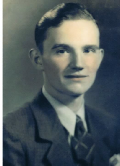
We research, care for and share the archives of the parish of Barton Stacey, Hampshire.

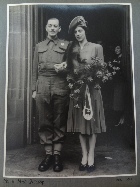
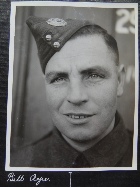
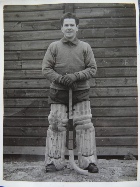
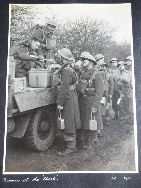
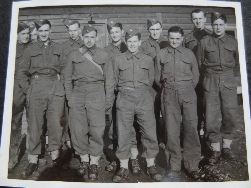
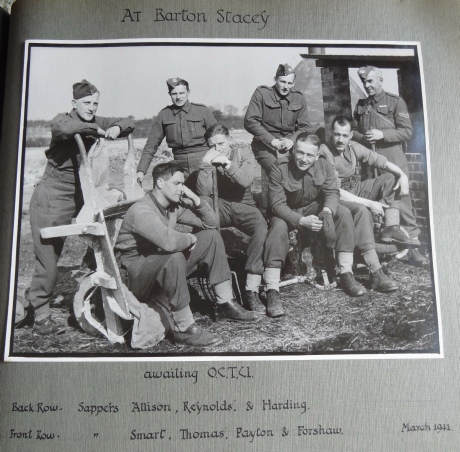
A CANADIAN SOLDIER REMEMBERS 1942 Stanley Scislowski
Photograph from http://www.perthregiment.org/obituary.html
Below: Extracts from Not All of Us Were Brave By Stanley Scislowski, pub. Dundurn 1 Mar 1997.
found at Google books https://books.google.com › History › Military › World War II
This book is currently advertised at Amazon.com
The story is about the hopes, the prayers, the fears, the daily miseries and even the lighter moments that the aspiring heroes of the Perth Regiment experienced on the Italian front as part of 11th Infantry Brigade, 5th Canadian Armoured Division. Not All of Us Were Brave focuses not on the heroes, but on the ordinary soldiers who endured the mud, the misery, the ever-present fear, the inspiration, and the degradation. The narrative holds nothing back: the dirty linen is aired along with the clean; the light is shown alongside the dark. It shows what war is all about.
**
Camp Barton Stacey
A fair peasouper of a fog greeted us as we stepped down onto the boardwalk of Whitchurch Station at the waking hour of six the next morning. The swirling paper was so thick we had trouble finding our vehicles parked on the station property. Shortly thereafter, with the fog thinned out considerably, we turned into the grounds of camp Barton Stacey, and I knew right from the beginning I was going to like the place. It was a neatly arranged camp of wooden barrack huts, called "spider huts", set behind permanent brick buildings housing the men's .. ablutions, latrines and a large vehicle maintenance shed. The Parade Square was a huge affair, as large as camp Ipperwash's but paved in ashphalt (or as the English call it, macadam). On the North side of the square were the permanent buildings, the largest one housing the mess hall and the NAAFI canteen. To the east was a large vehicle shared or workshop. The camp Garrison Theatre, the size of an aeroplane hanger, was close to the camp entrance, while nestling under the trees at the south-east corner of the camp was the Sally Ann hut. Behind the buildings on the East were the drab, dark stained wooden huts.
Camp Barton Stacey wasn't just one camp, but a complex of several abutting each other, large enough to hold the entire fifth armoured division. The wood frame huts were comfortable enough in the warmer weather in the summer months, but I could just imagine what they'd be like in the damp cold of an English winter. With no installation and only a small coal stove in the centre of the hut to provide heat it had to be a bug here on cold nights. Thank God we were gone before winter set in.
Since the camp was only 4 miles away from Andover, the nearest sizeable habitation where a jaded soldier might look for some fun and other forms of soldierly interest, mainly the fairer sex, a good many of us spent both Saturday and Sunday afternoons in this pleasant little Hampshire village. Sometimes we ventured farther afield to Winchester, a much larger town, and with more to see and do. Weekday evenings, however, were spent in camp: we were often somewhat weary, depending on how much physical effort we expended during the long training day, and also "broke". We also had letters to write, reading to catch up on, and the euchre and crib players had their seemingly endless games to play. And of course there were the canteens to visit and the Garrison Theatre, where a new movie was shown every second day. So there was no reason for anyone to be bored. Barrack life on an average evening at Barton Stacey could actually be quite enjoyable.
As for canteens, there were four very close by -- two Sally Ann canteens and two NAAFI canteens, one of each being in the adjoining Recce Regiment camp. The one I preferred was the Sally Ann -- only a hop, skip and jump from our hut - not only because it was closest, but also because of a certain counter maid whose charms had me enthralled, and she probably enthralled everyone else. The queues in front of her place at the counter were invariably three times longer than any of the others. This girl I fell in love with was strikingly attractive, although not in the Hollywood criteria of beauty. Her complexion was flawless, and her sparkling blue eyes, whenever they locked on mine, made my heart skip a couple of beats and my knees turned to jelly. Though her pearly white teeth were very slightly forward, like those of the Hollywood actress June Allison, they actually enhanced her good looks, especially when those beautiful lips of hers had that ready smile for you as you took your order. She was the girl of all my fantasies. How could I ever forget her?
Field training begins
Battle drill was now all the rage in the Canadian Army. We practised it first on the square, over and over again till we were darn well sick of it. And when we had it down pat on the square we started going through the routine on the heathland outside camp. As basically simple as the drill was we could never seem to satisfy our officers. Though the precepts of the drill was straightforward tactics of left flank all right flanker, with one section of platoon giving covering fire while the other two went into the attack, it was not always easy to follow through when we found ourselves trying to work our way through a clump of stinging nettle or woody underbrush. All in all, we were getting pretty well fed up with Battle drill. I recall using it only once in all our engagements in Italy.
Mr Scislowski goes on to describe in mid-September of 1943 how the tide of war had turned sharply in the Allies favour and the birth of exercise harlequin and howl on the morning of September 11 the role which the fifth armoured division would play in the invasion was described in detail to the men. They stopped for the night at a staging camp on the outskirts of Southampton -- in a hurricane force storm the severest in living memory -- they continued to the dock. However the invasion was off, though they did not return again to Barton Stacey.

I am the granddaughter of
John Lawrence Cotterell, known as Jack to his friends. He took a number of photos of his time at Barton Stacey in early 1941 and he names the sappers in this photo.
He then went onto Kent where he took further photos. It would be lovely for the photos to reach a larger audience, some might even prove to be very precious to remaining family members.
My grandfather lived in Wolverhampton for the majority of his life. He spent most of the war years in The Gambia serving as a Royal Engineer. Joy Ferguson
[O.C.T.U. Officer Cadets Training Unit]
The five photographs below were taken by Jack Cotterell in February and March 1841 - we are not sure whether they apply to Barton Stacey Camps or elsewhere.
Do get in touch if you have information on these photos.
Horace M. Devault
My grandfather was stationed in Barton Stacey for a bit during the war and was placed with a family. I am hoping someone in the area might remember him. His name was HORACE M. DeVAULT. I appreciate any help you could give me. kristieleedean@gmail.com

